-
Car Reviews
- All reviews
- Midsize SUVs
- Small cars
- Utes
- Small SUVs
- Large SUVs
- Large cars
- Sports SUVs
- Sports cars
- Vans
Latest reviews
- Car News
-
Car Comparisons
Latest comparisons
- Chasing Deals
New-gen Hilux is exactly what you would expect, but that might be the right move
The Toyota Hilux feels part of Australian life in the same way Holden Commodores and Ford Falcons were two decades ago, so it’s no wonder that Toyota has emphasised the Australian input that has informed the development of this new, ninth-generation version of the iconic ute.
Toyota’s Centre of Excellence in Altona in Victoria — the old manufacturing site of Camry and more — is where we start our journey. In a dark design studio, the voice of Sean Hanley, VP Sales, Marketing, Franchise Operations, booms around the dimly-lit Hilux clay model.

It looks slick, with local design boss Nic Hogios taking us through the tough-yet-modern ‘Cyber Sumo’ front styling. We’ll have a drive shortly, but first port of call is why Australia is so important to Hilux, which will continue to be built in Thailand on an upgraded version of its existing ladder frame, using essentially the same cabin cell.
The design process started in earnest back in 2021, with Toyota identifying core Hilux use cases, and distilling the essence of its Ford Ranger, Isuzu D-Max, Mitsubishi Triton, and Kia Tasman competitors.
Australia isn’t a random choice for Hilux development, either. Since the eighth gen’s global launch in 2015, the Altona-based team has been responsible for multiple visual and engineering updates to the vehicle, including in-depth programs that spawned wide-body Rogue, Rugged-X and GR Sport with rear disc brakes and more grunt.
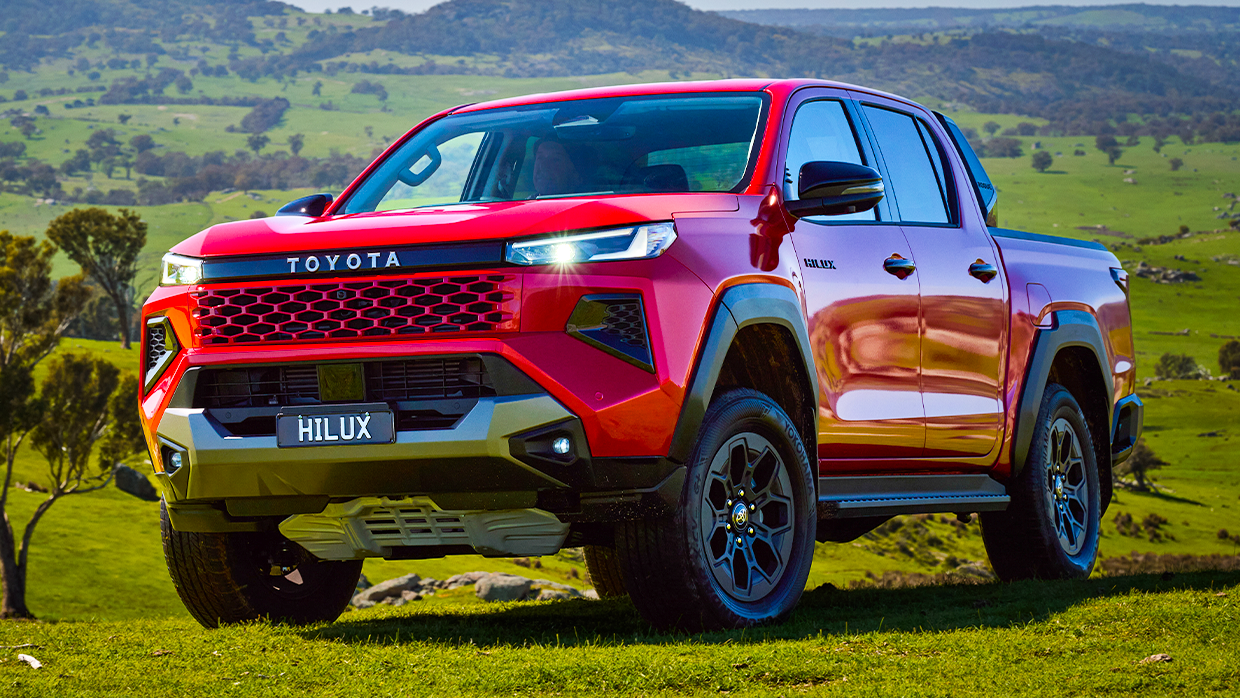
Forget the flagships for now because the new Hilux is about core buyers. The new ute has to back up Toyota’s 51 percent return purchase rate of the nameplate. That means what’s known as QDR — quality, durability, reliability — is at the top of the agenda.
The familiar ‘1GD’ 2.8-litre turbo-diesel will be the only engine option for now — no more 2.7L petrol or 2.4TD — with six-speed automatic and manual transmissions carrying over, as does the basic suspension layout (independent wishbones up front and leaf-sprung live rear axle), plus part-time four-wheel drive.
Changes are reflected in significant price rises in some variant grades.
Some more granular changes to improve the Hilux are new liquid-filled engine mounts, more spot welds, changes to the front structure, and suspension tuned for Australian conditions.

The upper-end SR5, Rogue and revived Rugged-X variant trims are now all fitted with rear disc brakes. A battery-electric version, imaginatively called the Hilux BEV, is set to arrive in the first half of 2026 targeting mining fleets and urban ute buyers.
But there’s no hybrid beyond 48-volt ‘V-Active’ start-stop, plug-in or otherwise, on the horizon. Such a vehicle would be a key way for Toyota to challenge the Ford Ranger PHEV, BYD Shark 6, and GWM Cannon Alpha.
As the flag-bearer of hybrids in Australia and having bent to the demands of petrol-electric power in the full-size 300 Series Land Cruiser and Tundra pick-up, baulking on a hybrid Hilux seems a strange strategy.
It’s also quite the contrast to the USA, where the equivalent midsize Tacoma ute is sold with a ‘proper’ hybrid system after adopting the brand’s latest TNGA-F platform back in 2023. The Hilux, meanwhile, carries on with a modified version of the same IMV platform as its predecessor.
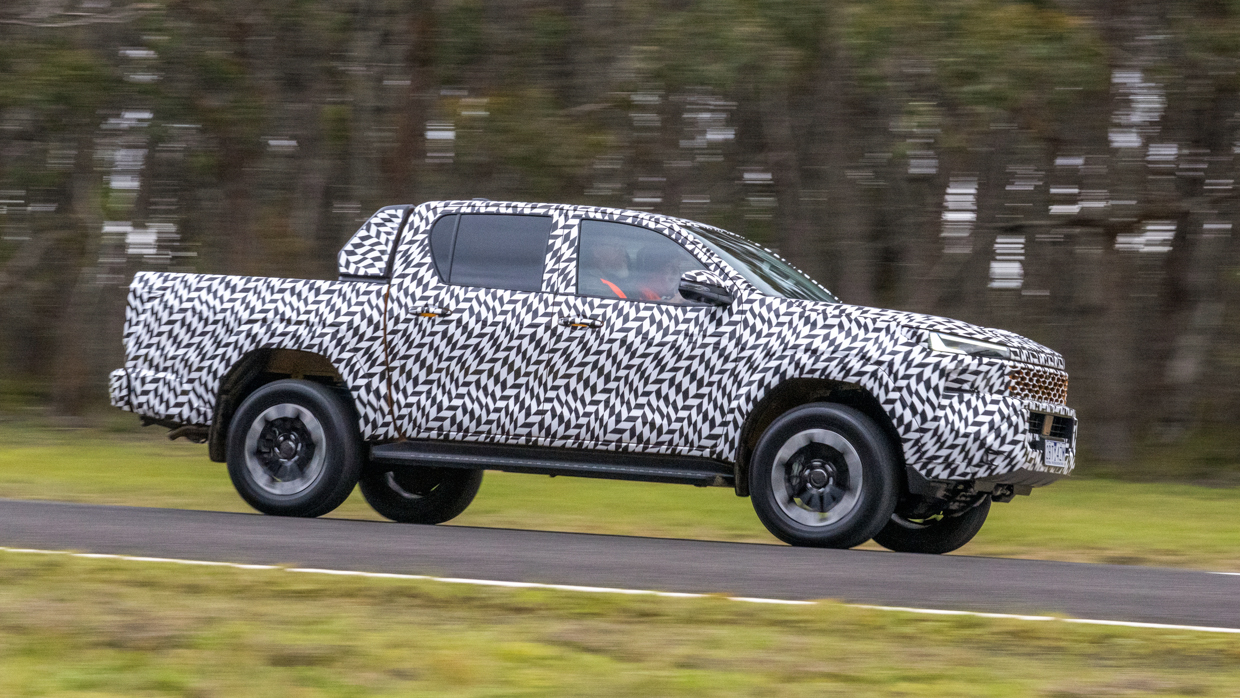
Most of the vehicles we interact with at the Australian Automotive Research Centre (AARC) proving ground, in Victoria, are wearing black-and-white camouflage, as we’re here – prior to the global reveal of Hilux – to sample pre-production examples.
Even under the camo, the new look with crisp lighting signature is clear to see, and it’s worth applauding Toyota for not following the huge, trapezoidal grille trend for its ute.
But you can also clearly see the old Hilux. We’re told the glass, roof and door handles are all carryover, while the door skins have been lightly massaged to suit the fresh front and rear clips, yet look almost identical.
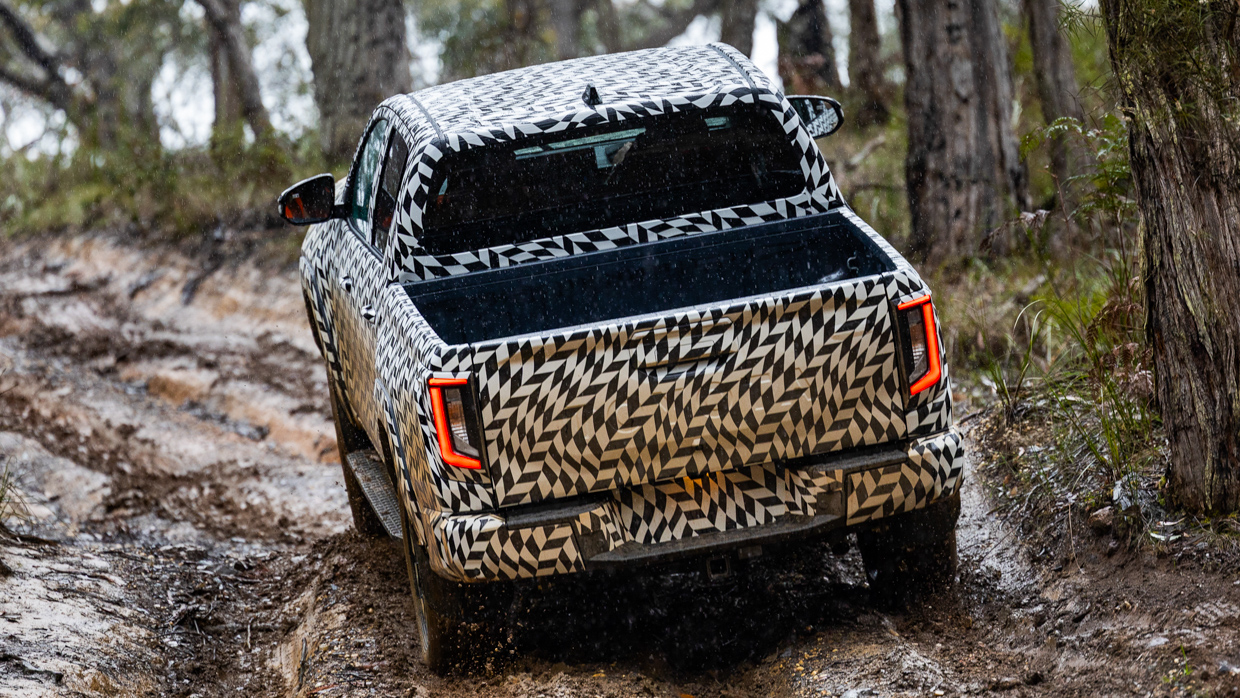
At the rear, there are new bigger tail lights, and a side-step to access the pick-up bed. Lower grade variants still go without a damped tailgate, the heavy steel lip flopping down when you pull on the chunky handle that incorporates the central brake light.
Of course, payloads across the lineup are competitive and 3.5-tonne braked towing has, naturally, been retained. Yet the tub dimensions are very similar to before so you still won’t fit a Euro-sized pallet between the Hilux’s arches like you can in Ranger and Volkswagen’s Amarok.
Inside, though, you could be convinced the Hilux is all-new. There’s a refreshing jump in perceived quality, sharper design and a quantum leap in technology.
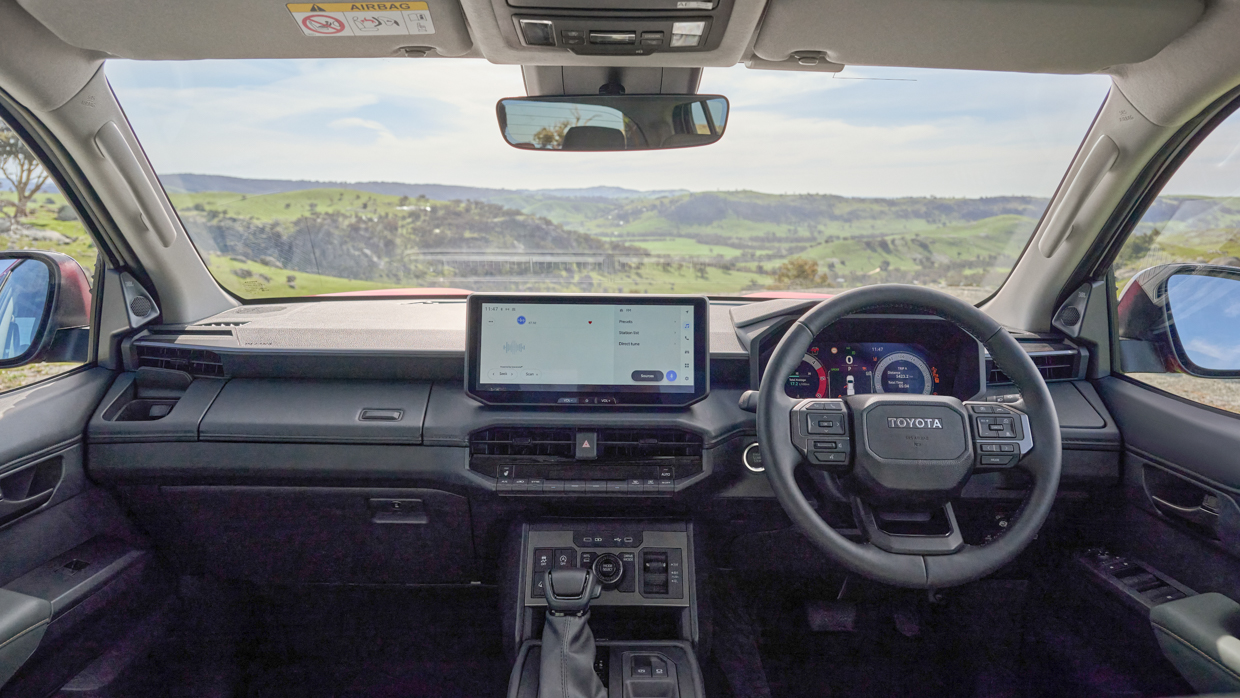

Our time was spent in the upmarket Rogue, which gets a new oxidised-copper like ‘Mineral’ leather upholstery colour with bronze stitching highlights, which probably won’t be to everyone’s tastes.
The SR5’s cloth knit upholstery is a big improvement over the previous car, though at a starting point of $63,990 before on-roads, manual seat adjustment feels a little cheap.
New tactile, soft materials wrap the Hilux’s once oppressively hard dash and there are clever storage spaces for odds and ends. And the audio system’s JBL speakers are now snuggled located down into the dash, rather than the old muffin-top protrusions.
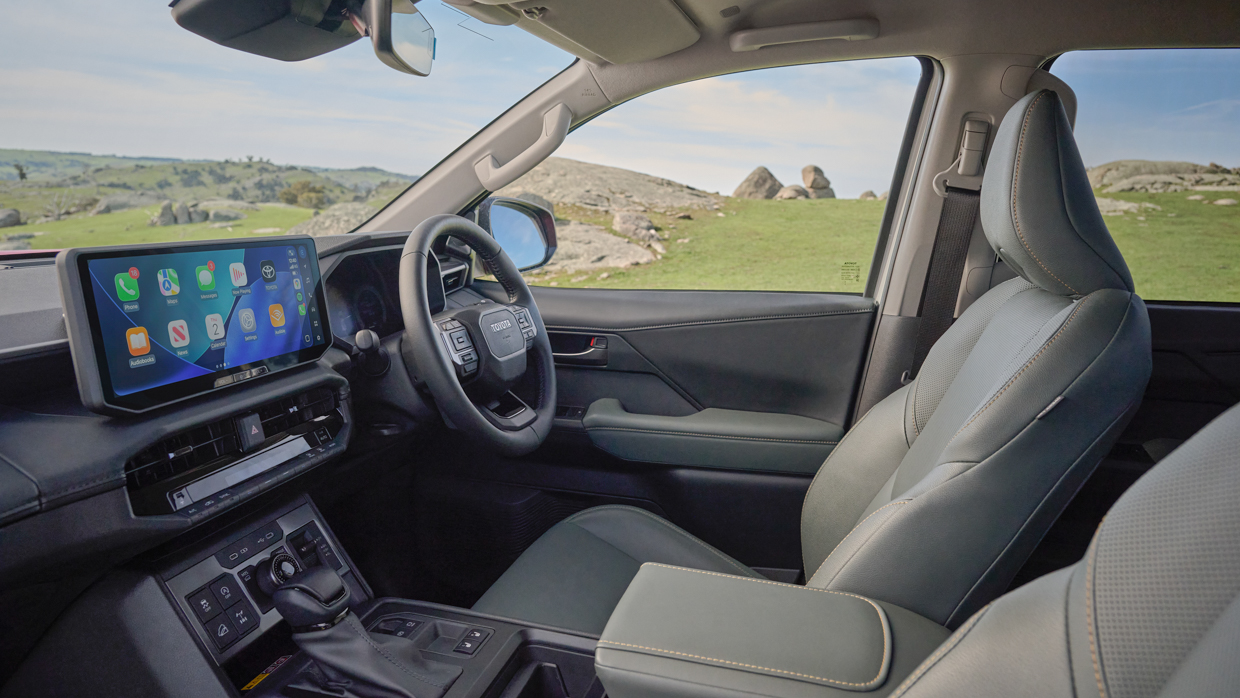
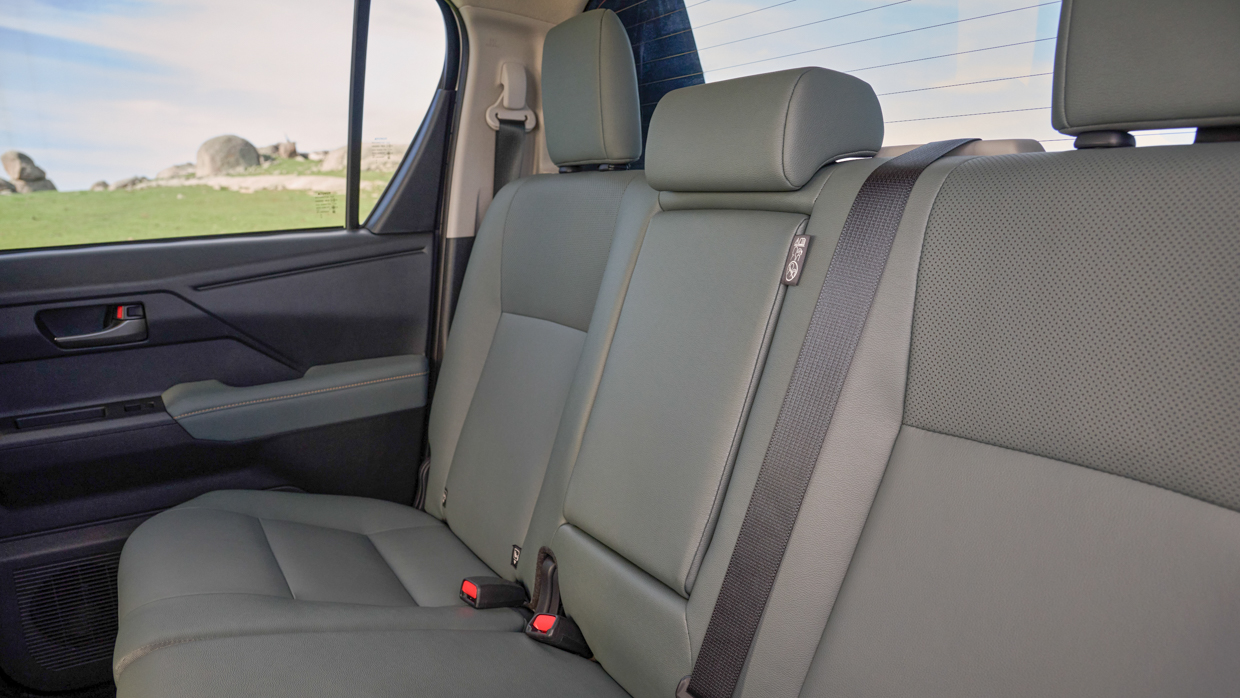
The 12.3-inch touchscreen runs current Toyota software which is serviceable, if not class-leading, and supports wireless Apple CarPlay and Android Auto. The good news is that there’s a healthy helping of physical switches for the HVAC, various shortcuts, and 4WD settings.
At the low end, the basic Workmate has the same massive screen but otherwise totally different dash layout with hard-wearing plastics, fit-for-purpose vinyl flooring, manual air-conditioning controls and cheerful back-to-basics vibes.
Seat comfort is improved across the board with greater support for the back and under the thighs in the front seats, something the old car needed desperately. A higher-set driving position and more steering wheel dish suits Hilux well.

With the passenger cell carrying over, though, the Hilux’s back seat remains one of the worst in class. At 188cm tall my leg and toe room are cramped, and headroom is not great. Bench comfort is improved with greater support and a pull-down armrest, while vision out is okay, and there are two USB-C charge points plus air vents.
It fails to move the game on and this is one area we wish Toyota Australia had gone further, but that would have surely required a new, more expensive platform.
Anyway, time to kick the Hilux into life (via a push-button in upper trims but Workmate is still a good old-fashioned twist key) and sample what it’s always been best at: bush bashing.

There are big, chunky buttons and switches for Multi-Terrain Select (MTS) off-road modes, 4WD selection (2H, 4H, 4L), rear differential lock, and traction control (which still operates as an ‘Auto LSD’ when pressed once) and these are all logically grouped around the sturdy gear shifter.
We’re told Toyota’s biggest challenge was getting the new traction control module to work as effectively as the old car’s honed system. It is now quieter and just as effective, even with MTS Auto (there’s also Rock, Sand, Mud in 4L) Hilux finds the perfect amount of wheel slip. The slippery rutted-out climb was child’s play.
Sadly, engaging the Hilux’s rear differential lock still disables traction control on the front axle, so most of the time you’ll still be better off letting the electronics do their thing.

Also new is the hill descent control (‘Downhill Assist Control’ or DAC in Toyota-speak) which has been recalibrated to run at a lower speed of three to four kilometres per hour, rather than six or seven, for greater control.
These changes and polish in calibration help keep the Hilux handily at the pointy end of off-roading in the ute segment.
There are some genuine improvements to the rest of the package. Suspension compliance is immediately improved with a softer edge off-the-top without sacrificing the classic Hilux mid-stroke support, though, unlike the bump-stop kissing Mitsubishi Triton.
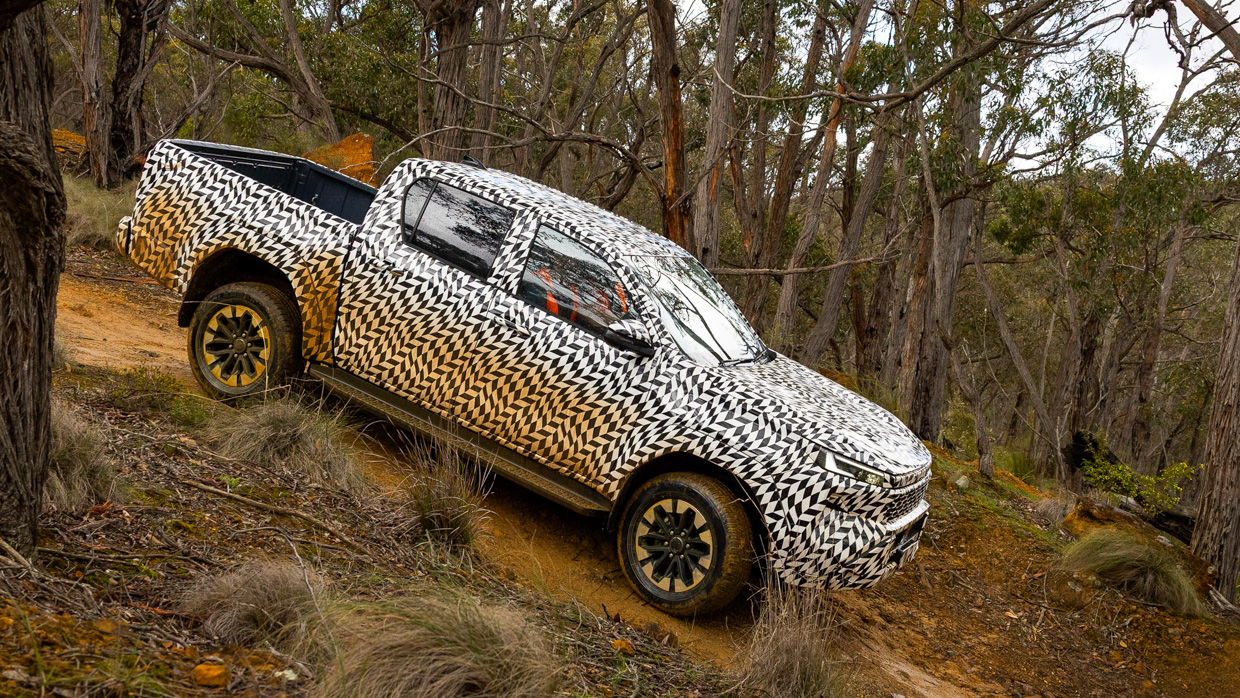
We reckon it will perform well when laden — call new Hilux 25 percent better than before.
The biggest change in drive feel is through the steering, where the electronic power-assisted steering is fingertip light when maneuvering and much more precise than the old, sloppy system.
The rest of the Hilux is much the same as before, as you’d expect for essentially zero changes on the powertrain side. The 1GD engine remains punchy in 150kW/500Nm tune, but why not offer more, as it has previously on the 165kW/550Nm eighth-gen GR Sport? Toyota says more grunt wasn’t on the ‘must-have’ list from customers.
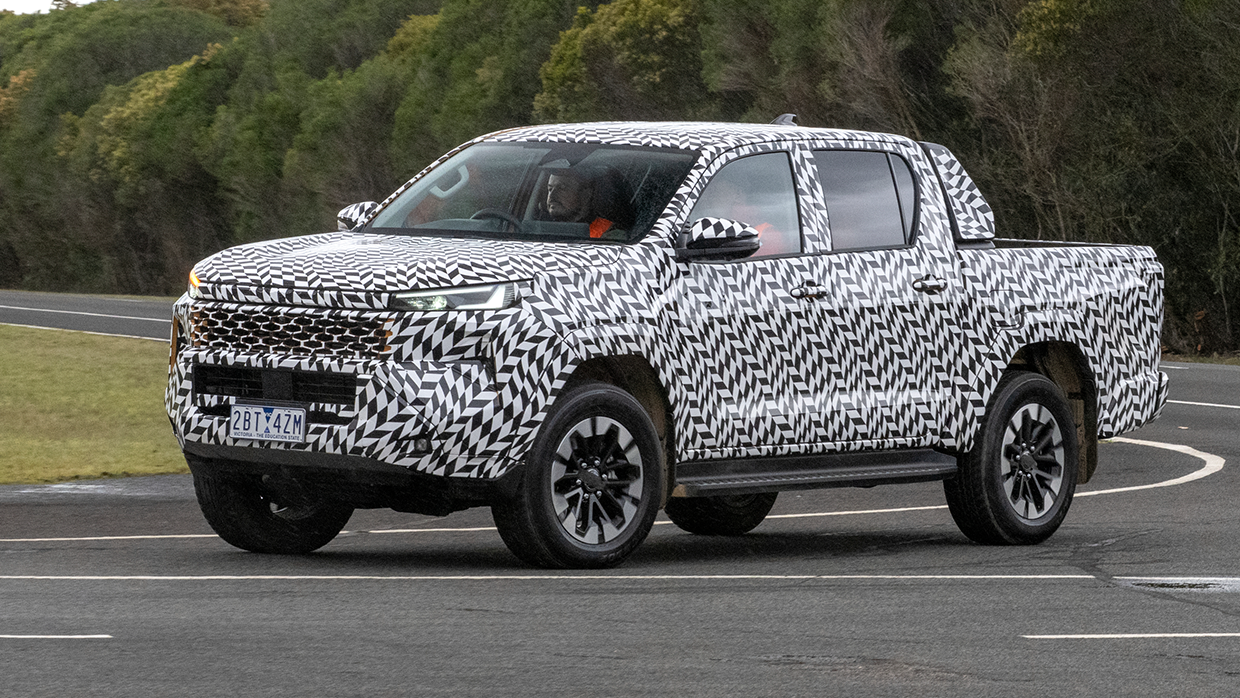
Then there’s the question of ratios: six isn’t very 2026. And Toyota has access to eight- (Prado) and 10-speed (LC 300) transmissions that should be up to the task and would have surely broadened Hilux’s appeal. Perhaps the barrier is spare parts availability, durability, or saving costs.
Crucially, it means the Hilux lags behind the Ford Ranger V6, Kia Tasman, Mitsubishi Triton… in not offering a full-time 4WD system. As effective as TC may be, there’s no replacement for all-paw traction.
The ninth-generation Toyota Hilux might not pull in a new audience. Toyota’s new ute is unashamedly for existing customers but with faster moving rivals than ever, one has to wonder if pandering to the converted will be enough this time around.
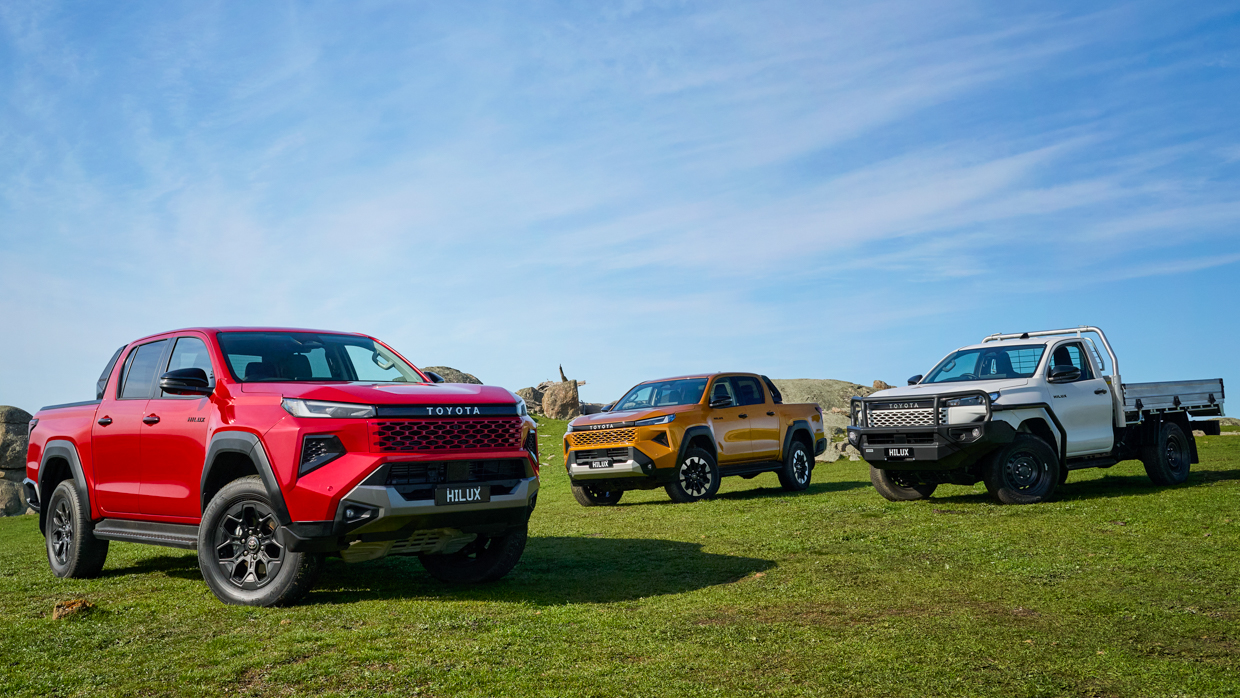
There are some standout changes such as cabin technology, crisp styling, and easy-breezy electric power steering, but this isn’t a game-changing Hilux. Call it an average of 15 percent better across the board, at least from our first taste.
Tellingly, Sean Hanley is predicting the new Hilux will “do fine” when it comes to sales, and when you’re talking about the vehicle that’s been the best seller for seven of the last 10 years, ‘fine’ will undoubtedly be a seriously strong result.
About Chasing cars
Chasing Cars reviews are 100% independent.
Because we are powered by Budget Direct Insurance, we don’t receive advertising or sales revenue from car manufacturers.
We’re truly independent – giving you Australia’s best car reviews.
The estimate provided does not take into account your personal circumstances but is intended to give a general indication of the cost of insurance, in order to obtain a complete quote, please visit www.budgetdirect.com.au. Estimate includes 15%^ online discount.
^Conditions Apply
Budget Direct Insurance arranged by Auto & General Services Pty Ltd ACN 003 617 909(AGS) AFSL 241 411, for and on behalf of the insurer, Auto & General Insurance Company Limited(ABN 42 111 586 353, AFSL 285 571).Because we don’t know your financial needs, we can’t advise you if this insurance will suit you. You should consider your needs and the Product Disclosure Statement before making a decision to buy insurance. Terms and conditions apply.
Indicative quote based on assumptions including postcode , 40 year old male with no offences, licence suspensions or claims in the last 5 years, a NCD Rating 1 and no younger drivers listed. White car, driven up to 10,000kms a year, unfinanced, with no modifications, factory options and/or non-standard accessories, private use only and garaged at night.
^Online Discounts Terms & Conditions
1. Discounts apply to the premium paid for a new Budget Direct Gold Comprehensive Car Insurance, Third Party Property Only or Third Party Property, Fire & Theft Insurance policy initiated online on or after 29 March 2017. Discounts do not apply to optional Roadside Assistance.
2. Discounts do not apply to any renewal offer of insurance.
3. Discounts only apply to the insurance portion of the premium. Discounts are applied before government charges, taxes, levies and fees, including instalment processing fees (as applicable). The full extent of discounts may therefore be impacted.
4. We reserve the right to change the offer without notice.